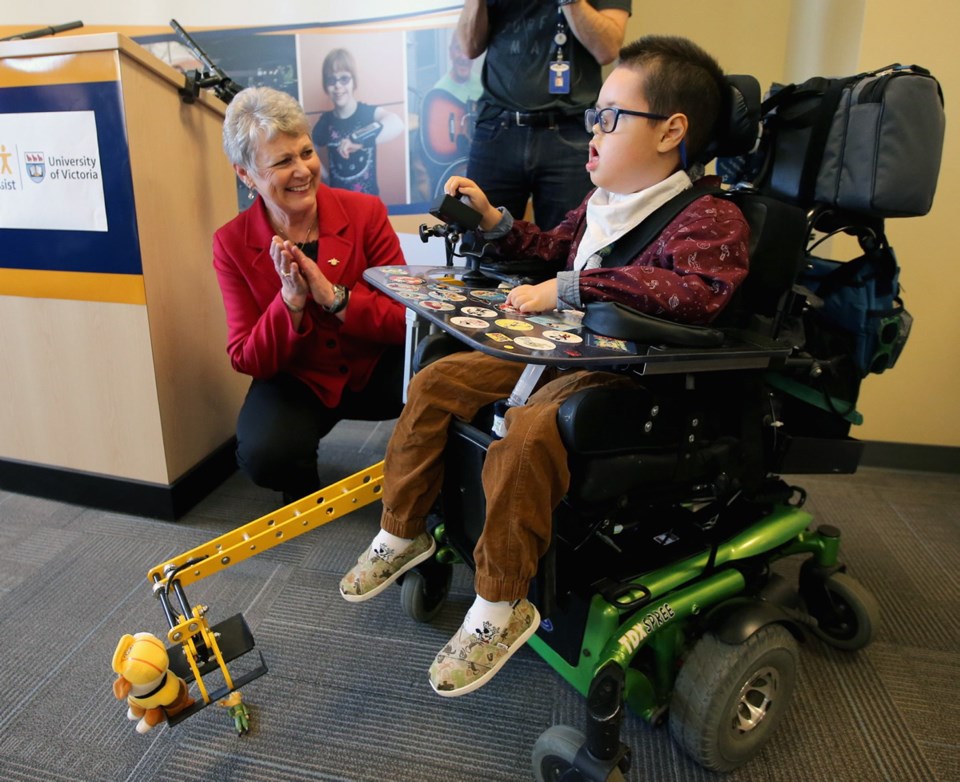Four-year-old Ethan Shannon uses a specialized electric wheelchair to get around, but when it come to play time, a robotic grabber allows him to pick up or retrieve a favourite toy.
“It makes a huge difference whenever he needs assistance to have a little independence,” May Shannon said of her son, who has nemaline myopathy, a neuromuscular disorder that affects muscle tone and strength.
The Shannon family was at the University of Victoria on Friday to help demonstrate seven new technologies, devices, toys and games created for child-development centres with $1.5 million from the B.C. government.
Katrine Conroy, minister of children and family development and a former early-childhood educator, was thrilled by the demonstrations.
“It shows what a difference we can make for kids with special needs,” she said. “It’s really heart-warming and nice to see.”
The devices are the work of CanAssist, a UVic organization that harnesses the ingenuity and expertise at the university to assist people with their unique special needs.
They include a gaming controller for children with limited hand function, a ball launcher for kids who can’t throw on their own, an app that allows kids to communicate by pointing to pictures on a tablet, and a remote-control car that can be operated by kids with limited dexterity.
The devices were developed with the assistance of the B.C. Association for Childhood Development and Intervention and staff members from 32 child-development centres around the province.
Participating child-development centres will have received five of the new devices by the end of this month.
The remaining two will be shipped in early 2019.
CanAssist began in 1999 with one professor reaching out to colleagues for help to specialize some devices for his daughter. It has now developed 2,698 software apps and 329 devices.
These include a device to allow a near-paralyzed man to throw balls from an electric wheelchair to play fetch with his two dogs, and a home intercom system that allows caregivers to communicate via telephone with a person with dementia.
• To see the CanAssist devices in action, go to canassist.ca/EN/cdc/.



